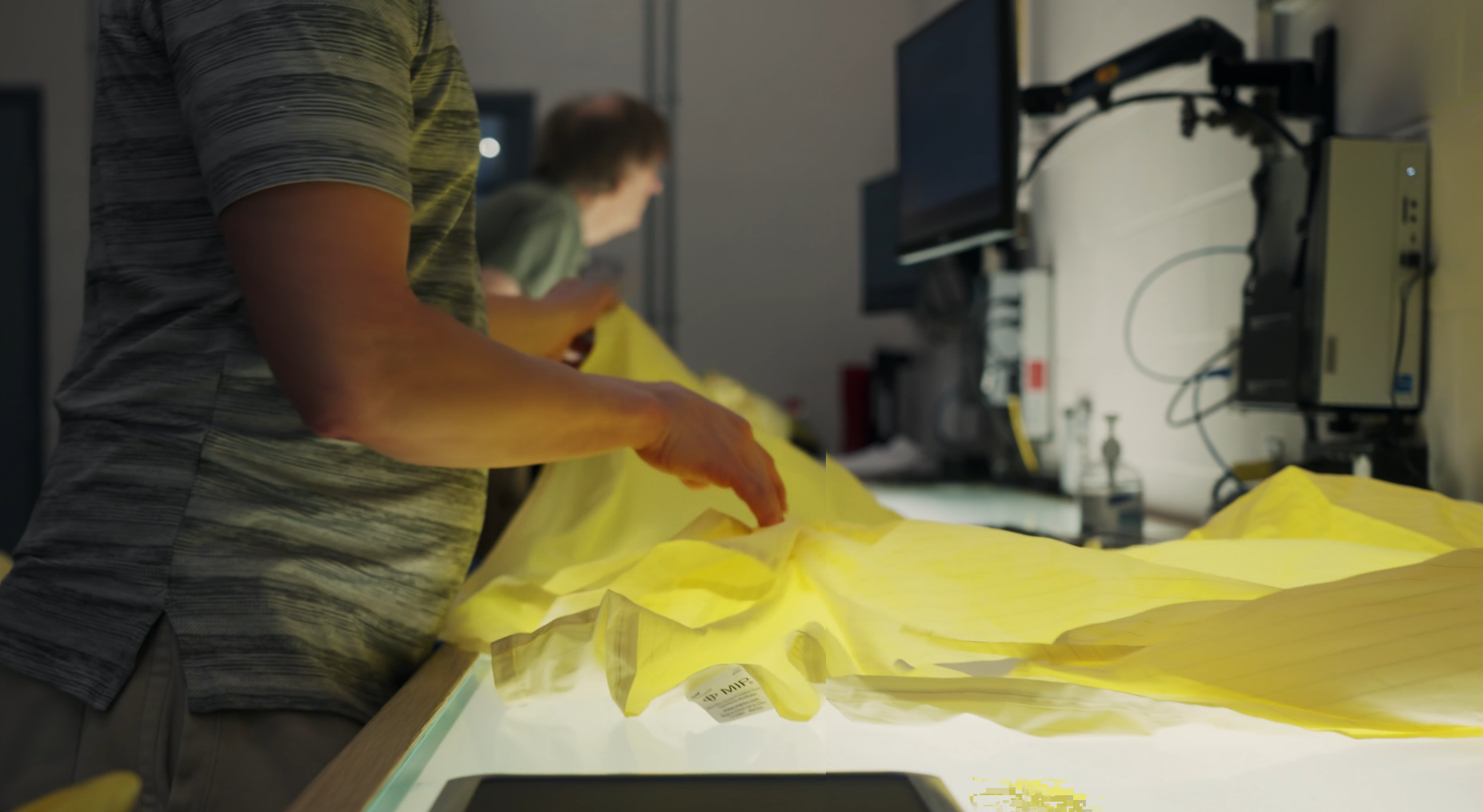Reusable Hospital Isolation Gowns
Radically reducing the biggest source of hospital waste for GHG and cost reductions

If you have ever undergone any kind of invasive procedure in a hospital, and if you are anything like us, in between bouts of worrying about how the procedure was going to turn out, you likely marveled at the vast amount of single-use materials that were involved: packaging, needles, tape, tubing, surgical gloves, masks, isolation gowns, and probably others we didn’t spot.
Isolation gowns are the open-at-the-back smock-like garments that hospital staff wear over their other clothes when a risk of infection or transmission is present. Typically made of plastics (polyester, polypropylene, polyethylene, or composites), traditional gowns are used only once and then disposed of, either in a landfill, or, if contaminated and classed as bio-hazard, incinerated.
The majority of hospital waste (by weight) is isolation gowns.1 We have not been able to find reliable estimates of the number used worldwide, but, monetarily, the production of isolation gowns is a big business, about € 2.5 billion per year.2
Alternatives to single-use isolation gowns are now being introduced in some hospital systems.
The hospitals in the region previously used about 850,000 disposable gowns per year. The new gowns are washed, sterilized, and inspected. Their use and laundering history is logged via RFID tags on each gown.
The general manager of the laundry expects that each new gown will be used at least 100 times before they need to be replaced. About 20,000 reusable gowns will be in circulation at various stages in the system at any one time, and about half of those will need replacing every year. Expired gowns go to a local company who further recycle the fibres into other personal protective equipment.
The program will also be a key contributor to the health authority’s goal to divert 70% of its landfill waste.
Other, larger jurisdictions are also switching to reusable gowns, with reductions in environmental impacts scaling with size. A program4 in Amsterdam, The Netherlands, aims to replace 5,000,000 disposable gowns with 50,000 reusable cotton ones, for a net CO2 savings of 1,000 tonnes per year.
Reducing the environmental impact of hospital operations is always a challenge because of health requirements that can’t be compromised. Programs like these demonstrate that significant progress is not only possible but is happening.
Reading
- Saber, D. A.; Norris, A. E.; Reinking, J.; Trompeter, G.; Sanford, D. Analyzing the Cost of Hospital Contact Isolation Practices: Implications for Nursing Administrator Practice, Research, and Policy. JONA: The Journal of Nursing Administration 2022, 52 (6), 352. https://doi.org/10.1097/NNA.0000000000001160.
- Hospital Gowns Market Size, Share & Trends Report, 2030. https://www.grandviewresearch.com/industry-analysis/hospital-gowns-market (accessed 2025-07-16).
- “An amazing program”: reusable gowns initiative launches at Island Health. https://www.islandhealth.ca/news/stories/amazing-program-reusable-gowns-initiative-launches-island-health (accessed 2025-07-16).
- The development of circular isolation gowns. REFLOW. https://reflowproject.eu/blog/the-development-of-circular-isolation-gowns-a-case-study/ (accessed 2025-07-16).